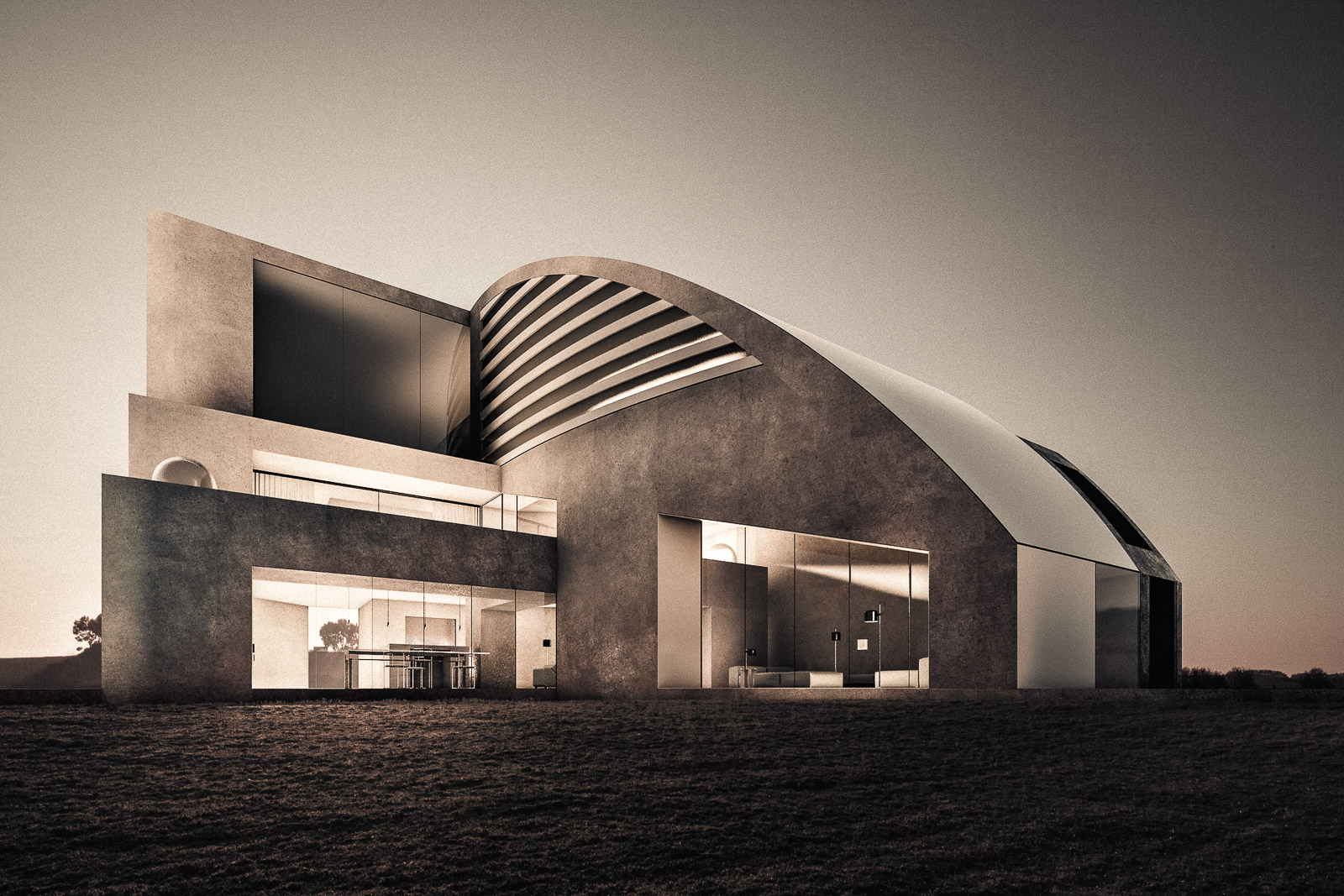
Review
Gabriele Detterer
In contemporary architecture, the boundaries between virtual representations and real architecture are increasingly blurred. Now, young Italian architect Antonino Cardillo uses digital images to simulate built structures in the media.
That he does not take the truth too seriously can be seen in Pinocchio’s long nose. In reality, it is known that identifying masters of deception is not so simple. Especially not in the digital network world. Some even manage to build a considerable media presence on the web with fabricated professional success. This happened in the case of the architect Antonino Cardillo, born in Sicily in 1975. The young Sicilian used the blurring boundaries between real built structures and virtual representations in the digital age to accelerate his career.
Star of Trend Magazines
Using 3-D technologies, Cardillo simulated views of planned buildings and presented computer-generated images as architecture built according to his designs. One wonders why architecture and design magazines like Wallpaper*, H.O.M.E and build did not recognise or let this deception pass. Is it the competition that drives them to produce glossy images of spectacular architecture and unusual interior design non-stop? Or the urge to select promising talents from the mass of young creatives?
The starting signal for Cardillo’s incredible career was given by Wallpaper*. The trend magazine catapulted him into the ‘World’s Top’ list of the thirty most talented young architects in 2009. From then on, things went smoothly for the imaginative Italian in the media. However, he lacked clients for residential houses when the only actually built structure to date, Nomura 24 (Osaka, 2009), was completed. The clever mind quickly invented places where he let his sculpturally shaped designs rise. He faked clients for it. Of course, he did not want to reveal their names. Dressing the strategy of secrecy in well-sounding words, Cardillo fabulises on his website: “Sometimes architecture is all the more interesting the more it remains invisible and hidden.”
Becoming bolder, in 2010 Cardillo dared to open a house in Barcelona that sprang from his imagination for viewing in the design magazine H.O.M.E.. “A house like a dance. Antonino Cardillo’s flamenco turned into a building”, the magazine titled the report. Pinpointing blooming imagination turned out to be a mistake. For just as indifferent as the magazine makers were regarding the distinction between real or faked, the Austrian architect and publicist Peter Reischer should take a close look at the ‘photographs’ and reveal them as fantasy images in the Vienna city magazine Falter. What a disgrace! Especially since the weekly magazine Der Spiegel followed up and also recently highlighted the deception.
Enough reason to ask Antonino Cardillo directly how he feels now. He claims the revelation does not bother him. He does not see himself as unmasked and suddenly turns the tables: He says he has simply directed the manipulation techniques of the media against them. The whole thing was an “intellectual bet” for clients, whom he characterises as “illuminati”. He excuses his misconduct and cloaks himself with the mantle of an artist who can let his imagination run free. Besides, he explains, architecture has always been ephemeral and “virtual”. From Palladio to Schinkel, from Sant’Elia to Mies van der Rohe, architectural artists have influenced architectural development and changed reality with ideas in the form of “surrogates”.
No Regret
The fusion of architecture and art was indeed an artistic device used by the utopians of the 1960s. The Architettura Radicale that emerged in Florence in the 1960s created images of visionary architectural landscapes that appeared real. Looking at the collages of Superstudio’s Monumento Continuo (1969), one finds the clear distinction between reality and vision blurred. However, and this is the crucial point, simulations were and still are explicitly declared as “projects” and virtual artefacts.
What will become of Antonino Cardillo? He appears as a prisoner of his own desires and dream worlds, proving that with the replacement of the craft of creative form-making and the triumph of computer technologies, not only is sensitivity to material substance lost, but also the connection to reality. CAD software and 3-D design made it easy for the sophisticated self-promoter to escape the limitations of his sphere of action and his professional prospects through trickery. He said he wanted to reach distant nodes of the web world with his strategy. This intention points to the dangers of permanent remote communication via the screen, which undermines the necessity of lived professional experience based on direct exchange and cooperation, including their corrective measures.
That this deception was orchestrated by an Italian novice architect is probably no coincidence. Cardillo tells how hopeless it is in Italy to earn a living as a young architect without having a letter of recommendation in your pocket or being able to identify yourself as a ‘son of…’. However, this misery, which indeed exists in Italy, does not give a blank cheque to tell lies and simulate reality with fabricated images. Nevertheless, Cardillo can be credited with inadvertently shedding light on a bad habit spreading in glossy magazines: these magazines increasingly feature buildings that their reporters have never seen in person.

Antonino Cardillo, Purple House, Pembrokeshire, 2011.